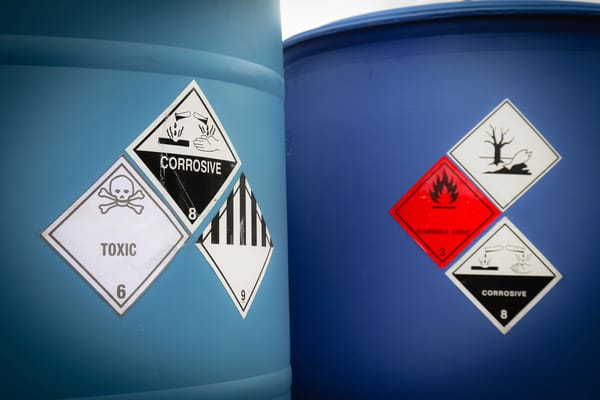14 steps to storing hazardous chemicals safely
If you have any hazardous chemicals in your workplace, you have a strict health and safety obligation to store these chemicals safely.
All substances that are flammable, explosive, corrosive, toxic, carcinogenic or otherwise dangerous must be securely stored.
Improperly stored chemicals can be highly dangerous and can potentially cause a serious accident.
A safe chemical storage location should primarily limit the exposure of workers and others to the risks associated with the chemicals, and protect people from the hazardous effects that could result from an accidental spillage or chemical reaction.
It is especially important that you never store hazardous chemicals in the vicinity of food and drinks.
When storing hazardous chemicals in your workplace, take the following steps:
- Read the safety data sheet (SDS) or label carefully, and follow any storage recommendations.
- Secure the chemicals against unauthorised access or use.
- Only keep minimal amounts of chemicals onsite. Ensure that all chemicals are clearly and correctly labelled, and that the labels are intact and legible.
- Do not allow chemicals to be exposed to the sun, excessive heat or sources of ignition.
- Provide adequate ventilation.
- Label shelves and cupboards so that chemicals can be stored in the right place.
- Use placarding where required.
- Ensure clear segregation schemes are maintained. Chemicals must be separated when being stored to ensure that incompatible chemicals do not mix if there is a spill.
- Keep the outside of containers clean and the storage area tidy.
- Do not store liquids above solids to avoid contamination in the event of a leak.
- Always store corrosives on spill trays.
- Ensure shelves are not overloaded.
- Never store flammable liquids in refrigerators or freezers unless they have been modified, i.e. spark-proofed.
- Separate incompatible chemicals that could react dangerously if stored together.
Note that different chemicals must be separated when being stored or transported to ensure incompatible chemicals do not mix if there is a spill. You should obtain professional advice about the segregation of hazardous chemicals.
From the experts behind the Health & Safety Handbook, the Bulletin brings you the latest work health and safety news, legal updates, case law and practical advice straight to your inbox every week.

